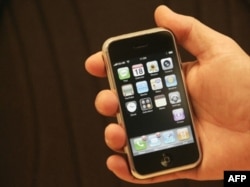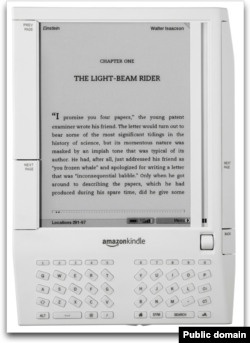Cutting deep into the inner reaches of the atom to see what matter is really made of. It sounds like science fiction, or perhaps a physicist’s dream, but in December, one giant step was taken toward accomplishing just that, as the Large Hadron Collider kicked into action.
It was just one of the stories that made 2009 a dynamic year in science and technology.
Large Hadron Collider
With technical problems resolved, the Large Hadron Collider, or LHC, sent proton beams whizzing through a 27-kilometer-long circular tunnel under the French-Swiss border, colliding them at a record 2.36 trillion electron volts. After this crucial early success, the stage is set for the discovery of mysterious subatomic particles – and perhaps some of the keys to the universe itself.
“The LHC I think will bring us very, very close to the understanding of the early universe,” said Rolf Heuer, general director of the European Organization for Nuclear Research, which is running the project. “Roughly 95 percent of the universe we don’t know, we don’t understand – the so-called dark universe. And I personally hope the LHC sheds the first light into that dark universe.”
Twitter
While protons were whizzing deep underground, there was plenty of technology at work above ground, too. Twitter, the micro-blogging site that allows users to track everything from their friend’s dinner plans to the inner workings of protest movements, made a huge impact in 2009.
Not only did it become a truly global phenomenon, with nearly 60 million users a month by year’s end, but Twitter, along with other social networking sites, was dynamic this year for its political role. It helped demonstrators organize in the postelection protests in Moldova in April, and in June in Iran, where many used Twitter to break through a state-imposed media blackout.
“Twitter’s 3 years old now, but we just finally saw it explode in the mainstream,” said Brian Chen, staff writer for the technology website Wired.com. “We’re seeing people execute citizen journalism on very high levels. The political applications are definitely the most interesting, because we’re finally giving a voice to people who are normally suppressed.
"It’s the whole idea of digital democracy – since everybody has access to the Internet and Twitter and to be able to share that information, as opposed to being suppressed.”
Smart Phones
In 2009, millions of Twitter messages, or tweets, were sent from smart phones – hand-held gadgets that bridge the gap between telephones and computers. This year saw a surge in smartphone applications -- downloadable programs that allow owners to customize their experience.
With Apple’s Pocket Universe application, you just point your iPhone skyward and it tells you what constellations you’re looking at.
If you like a song you hear playing but don’t know what it is, the Shazam application will identify it for you.
Apple registered its 1 billionth application download this year and now offers more than 100,000 to choose from.
“So, you know, what does 100,000 applications mean?” says Chen. “What does it mean to be able to have all of these different applications that I can choose to be fitting my lifestyle? It’s kind of this dream of the perfect device, the perfect gadget – the one device that does everything.”
Kindle
But even true devotees can sometimes tire of their smart phones. When that happened this year, many of them chose to pick up a good book – or rather, to download a good book.
Kindle, the hand-held device on which users read digitized books, was rolled out internationally this year. Now available in more than 100 countries, the device holds 1,500 books, many of which are delivered in less than 60 seconds.
Health & The Environment
But high-tech gadgets weren’t the only thing to come out of the world’s labs this year. A biodegradable, mushroom-based Styrofoam substitute was produced, along with a powder capable of cleaning mercury from industrial wastewater.
And also making the world a more sanitary place in 2009 was the BioMask. Made of special fibers that bind to bacteria and viruses, the face mask kills nearly 100 percent of the flu virus in less than a minute.
Another advance on the health front came when 3M introduced a modernized version of the stethoscope. Bluetooth-equipped, the tool not only allows a doctor to hear a patient’s heartbeat, but also transmits the data to a computer program. Minute abnormalities are detected that the doctor might otherwise miss.
Perhaps the biggest health breakthrough of the year, however, was an HIV trial vaccine that resulted in a 31 percent lowered risk of infection. The results were announced after a three-year study of some 16,000 Thai volunteers. While some scientists have expressed doubt over the legitimacy of the findings, others have hailed this as a milestone in the HIV fight.
“[The trial vaccine] cannot be used in the general population because it’s transient and the level of protection is too low. But its importance is huge because it’s a proof of concept that we actually can build a vaccine that can confer – albeit modest – protection against HIV,” said Dr. Alan Bernstein, executive director of the Global HIV Vaccine Enterprise.
“That has given the field a huge shot in the arm, if I can use a vaccine term, that it is going to be possible to bootstrap up from that 31 percent.”
For its part, the United Nations will remember 2009 as its International Year of Astronomy, declared in recognition of 400 years since the discoveries of Galileo. And while the year saw a number of failed NASA launches, the Planck Observatory didn’t disappoint. Sent to space in May, it began its study of the cosmic microwave background -- the radiation left over from the millennia following the Big Bang.
To enable accurate readings, the observatory’s High Frequency Instrument was cooled to a remarkable -273 degrees Celsius. It is the coldest object in the known universe.
Now that’s something even your smart phone can’t do.
It was just one of the stories that made 2009 a dynamic year in science and technology.
Large Hadron Collider
With technical problems resolved, the Large Hadron Collider, or LHC, sent proton beams whizzing through a 27-kilometer-long circular tunnel under the French-Swiss border, colliding them at a record 2.36 trillion electron volts. After this crucial early success, the stage is set for the discovery of mysterious subatomic particles – and perhaps some of the keys to the universe itself.
“The LHC I think will bring us very, very close to the understanding of the early universe,” said Rolf Heuer, general director of the European Organization for Nuclear Research, which is running the project. “Roughly 95 percent of the universe we don’t know, we don’t understand – the so-called dark universe. And I personally hope the LHC sheds the first light into that dark universe.”
While protons were whizzing deep underground, there was plenty of technology at work above ground, too. Twitter, the micro-blogging site that allows users to track everything from their friend’s dinner plans to the inner workings of protest movements, made a huge impact in 2009.
Not only did it become a truly global phenomenon, with nearly 60 million users a month by year’s end, but Twitter, along with other social networking sites, was dynamic this year for its political role. It helped demonstrators organize in the postelection protests in Moldova in April, and in June in Iran, where many used Twitter to break through a state-imposed media blackout.
“Twitter’s 3 years old now, but we just finally saw it explode in the mainstream,” said Brian Chen, staff writer for the technology website Wired.com. “We’re seeing people execute citizen journalism on very high levels. The political applications are definitely the most interesting, because we’re finally giving a voice to people who are normally suppressed.
"It’s the whole idea of digital democracy – since everybody has access to the Internet and Twitter and to be able to share that information, as opposed to being suppressed.”
Smart Phones
In 2009, millions of Twitter messages, or tweets, were sent from smart phones – hand-held gadgets that bridge the gap between telephones and computers. This year saw a surge in smartphone applications -- downloadable programs that allow owners to customize their experience.
With Apple’s Pocket Universe application, you just point your iPhone skyward and it tells you what constellations you’re looking at.
If you like a song you hear playing but don’t know what it is, the Shazam application will identify it for you.
Apple registered its 1 billionth application download this year and now offers more than 100,000 to choose from.
“So, you know, what does 100,000 applications mean?” says Chen. “What does it mean to be able to have all of these different applications that I can choose to be fitting my lifestyle? It’s kind of this dream of the perfect device, the perfect gadget – the one device that does everything.”
Kindle
But even true devotees can sometimes tire of their smart phones. When that happened this year, many of them chose to pick up a good book – or rather, to download a good book.
Kindle, the hand-held device on which users read digitized books, was rolled out internationally this year. Now available in more than 100 countries, the device holds 1,500 books, many of which are delivered in less than 60 seconds.
Health & The Environment
But high-tech gadgets weren’t the only thing to come out of the world’s labs this year. A biodegradable, mushroom-based Styrofoam substitute was produced, along with a powder capable of cleaning mercury from industrial wastewater.
And also making the world a more sanitary place in 2009 was the BioMask. Made of special fibers that bind to bacteria and viruses, the face mask kills nearly 100 percent of the flu virus in less than a minute.
Another advance on the health front came when 3M introduced a modernized version of the stethoscope. Bluetooth-equipped, the tool not only allows a doctor to hear a patient’s heartbeat, but also transmits the data to a computer program. Minute abnormalities are detected that the doctor might otherwise miss.
Perhaps the biggest health breakthrough of the year, however, was an HIV trial vaccine that resulted in a 31 percent lowered risk of infection. The results were announced after a three-year study of some 16,000 Thai volunteers. While some scientists have expressed doubt over the legitimacy of the findings, others have hailed this as a milestone in the HIV fight.
“[The trial vaccine] cannot be used in the general population because it’s transient and the level of protection is too low. But its importance is huge because it’s a proof of concept that we actually can build a vaccine that can confer – albeit modest – protection against HIV,” said Dr. Alan Bernstein, executive director of the Global HIV Vaccine Enterprise.
“That has given the field a huge shot in the arm, if I can use a vaccine term, that it is going to be possible to bootstrap up from that 31 percent.”
For its part, the United Nations will remember 2009 as its International Year of Astronomy, declared in recognition of 400 years since the discoveries of Galileo. And while the year saw a number of failed NASA launches, the Planck Observatory didn’t disappoint. Sent to space in May, it began its study of the cosmic microwave background -- the radiation left over from the millennia following the Big Bang.
To enable accurate readings, the observatory’s High Frequency Instrument was cooled to a remarkable -273 degrees Celsius. It is the coldest object in the known universe.
Now that’s something even your smart phone can’t do.


















